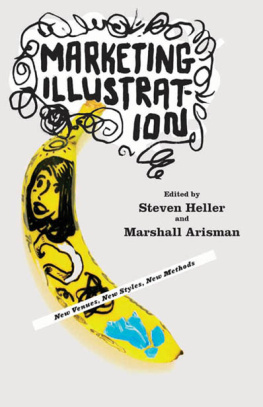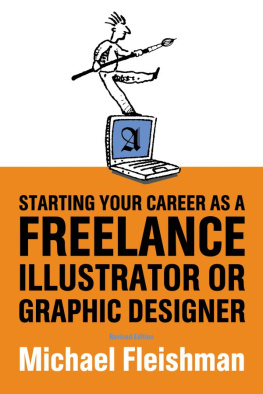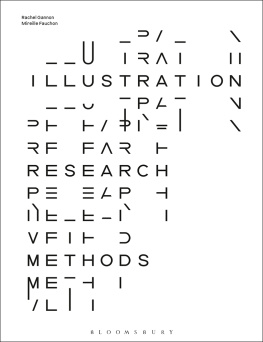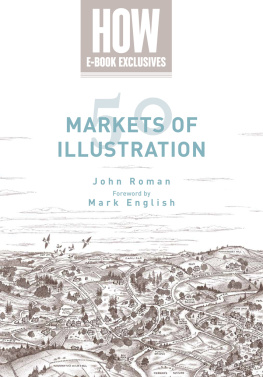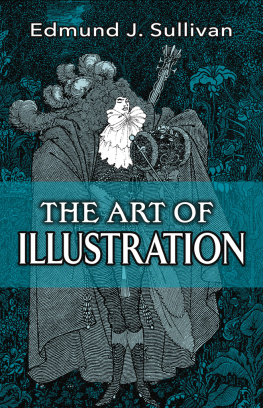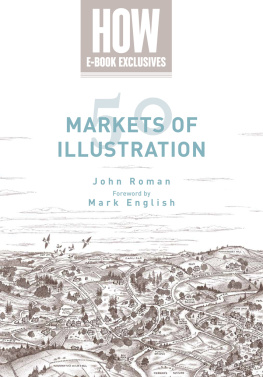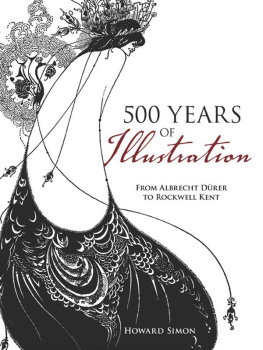Marketing Illustration
New Venues, New Styles, New Methods
by Steven Heller and Marshall Arisman
2008 Steven Heller and Marshall Arisman
All rights reserved. Copyright under Berne Copyright Convention, Universal Copyright Convention, and Pan-American Copyright Convention. No part of this book may be reproduced, stored in a retrieval system, or transmitted in any form, or by any means, electronic, mechanical, photocopying, recording, or otherwise, without prior permission of the publisher.
12 11 10 09 08 5 4 3 2 1
Published by Allworth Press
An imprint of Allworth Communications, Inc.
10 East 23rd Street, New York, NY 10010
Cover design by James Victore, Inc.
Interior design by Shawn Hasto
Page composition/typography by Integra Software Services, Pvt., Ltd., Pondicherry, India
Library of Congress Cataloging-in-Publication Data
Heller, Steven.
Marketing illustration: new venues, new styles, new methods / by Steven Heller
and Marshall Arisman.1st ed.
p. cm.
Includes index.
ISBN-13: 978-1-58115-657-7
ISBN-10: 1-58115-657-X
eBook ISBN: 978-1-58115-724-6
1. Commercial art. 2. Commercial artMarketing. I. Arisman, Marshall.
II. Title.
NC1001.H46 2008
741.60688dc22
2008050224
Printed in the United States of America
Table of Contents
To Market, to Market
Acknowledgements
We are indebted to Tad Crawford, publisher, for his continued support of illustration and our books on the subject. Thanks also to Bob Porter, associate publisher, for his enthusiasm, and to Janet Robbins, our editor on this project.
Nothing could be accomplished without the persistent aid of Kim Ablondi, whose managerial skills are invaluable to our projects.
Gratitude goes to David Rhodes, President of the School of Visual Arts, for allowing the School of Visual Arts to co-publish this and our other volumes. And to Anthony Rhodes for his continued support.
Thanks also to all those who cooperated and responded to our many requests for information and insight. This book is dedicated to those illustrators and educators who passionately work in this historic field.
SH & MA
Foreword
To market, to market, to buy a fat pig,
Home again, home again, dancing a jig;
To market, to market, to buy a fat hog;
Home again, home again, jiggety-jog;
To market, to market, to buy a plum bun,
Home again, home again, market is done.
If only it was this easy to market your illustration. But given the changes in the field over the past decade, the traditional outlets have become more difficult to break into and the newer ones are a bit more enigmatic than they should be.
This is no Mother Goose book, but rather a guide for the young or old illustrator who wonders what the best routes are for selling work, getting assignments, and reaching an audience. You will see that conventional and unconventional methods are both current. The market has been opened to a wide range of genres and methods, so once youve finished this book, we urge you to jiggety-jog your way to whichever market is the most open for your specific talents.
Introduction
What an Illustrator Wants:
A Letter to the Editors
It may seem odd to begin a book on marketing and the future of illustration with a letter from a student, but having received scores of these annually, weve come to believe they are indicative of both the insecurities and the hopes of those thousands who enter the field every year. This particular letter is not unusual, but it is extremely articulate. It reads almost like a manifesto, so when it arrived, we felt it would be the perfect introduction to this book.
Dear Sir,
My name is Brian Markle. I am from Seattle and I attend Cornish College of the Arts. I am a student illustrator right now; I begin my senior year this fall, and I have reached an obstruction in my field and am feeling a little disconcerted. I am a well-educated designer, and I think in terms of design, but I answer my problems with illustration.
Yet why is it that illustrators very rarely get the lucrative conceptual work designers get? Exhibition design, information design, environmental design, social design, campaign design, academic design; I have practiced and studied all of these components of design, but on every project, I end up with illustration and clean type.
The drawings differ. I do not have a consistent style, and I work in motion and Web as well. I laugh at this semi-existential crisis within my field, but it does concern me, because I know that the success of an illustrator weighs heavily on his or her notoriety for a certain style.
So I ask, Can illustrators be known for a more conceptual and process-based practice, or should they rely on maintaining a certain aesthetic?
This sounds like a rather trite problem for a student, because I do know that illustration and design can be quite often one and the same. But what about those illustrators who want to be considered illustrators? This is my problem, which relates to my intended thesis this spring.
I want my thesis to deal with the new illustrator. The illustrators of today should no longer have to be subject to trends that cause their jobs to become rather short-lived. Instead, I would like to see illustrators become more known not only for their process, but also their content value. When I say content value I am referring to what we choose to draw, not how we draw.
Great illustrators, to me, are supreme designers, for they cherish clarity of image but they also handle that clarity in an infinite number of illustrative ways for various clients and formats. Their work goes beyond good drawing; it is just damn good thinking.
Yet for some of these illustrators, their work lives in the world of typical illustration (i.e., music, books, editorials, and advertising). Rarely do you see a great illustrator on the front of a huge social campaign, a conceptual exhibit, academic/research work, environmental design, or info-graphics.
And I know the theories for this. I cherish type as much as I do illustration and I respect simplicity and reductive logic within my drawings, but I feel like what is truly missing in the theories of modernism and functional design is FUN! Fun can be the single component to make everything work. And it can be a highly employable trait, much like a good illustrator who is known for watercolors. Paul Rand knew this, which is why people acknowledged him for his thinking, but overlooked his simple, brilliant drawing style.
So I ask again, Can illustrators be known for a more conceptual and process-based practice, or should they rely on maintaining a certain aesthetic
If you read this, thank you so much for your time. Any advice or words you can contribute would be greatly appreciated.
Brian Markle
Preface
What an Illustrator Will Get:
A Letter From the Editors
What Brian Markle wants (as do most illustrators) is respect. That is not in our power as authors to provide, but we can offer suggestions and alternatives on how to get work. Illustration has long been a second cousin to design, although it was oncein the early twentieth centuryits uncle. Given the current surge in the marketplace for visual entertainment, from graphic novels to video games to animated films to toys and streetwear, the role of the illustrator is decidedly more significant as a generator of content and of profit. With this comes new definitions for illustration and illustrator. This book reports on that shift in emphasis, as well as on the maintenance of the status quo.

